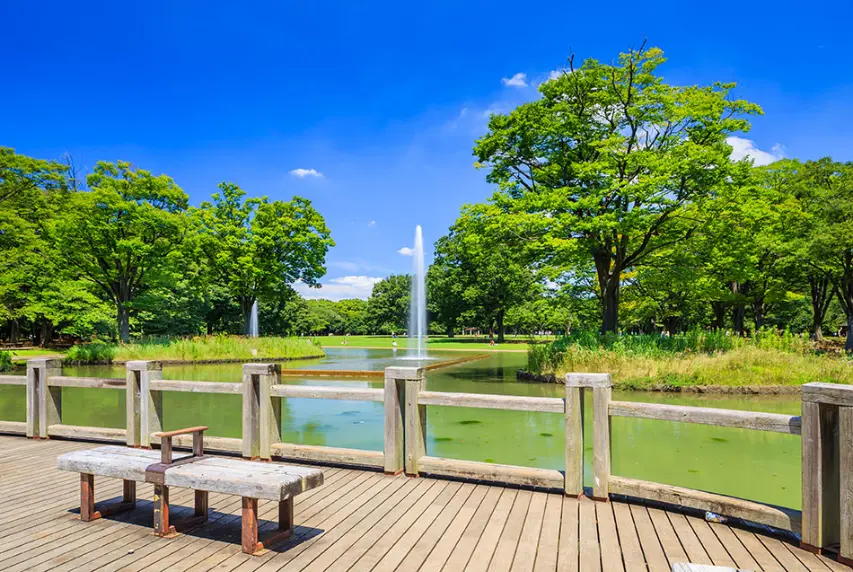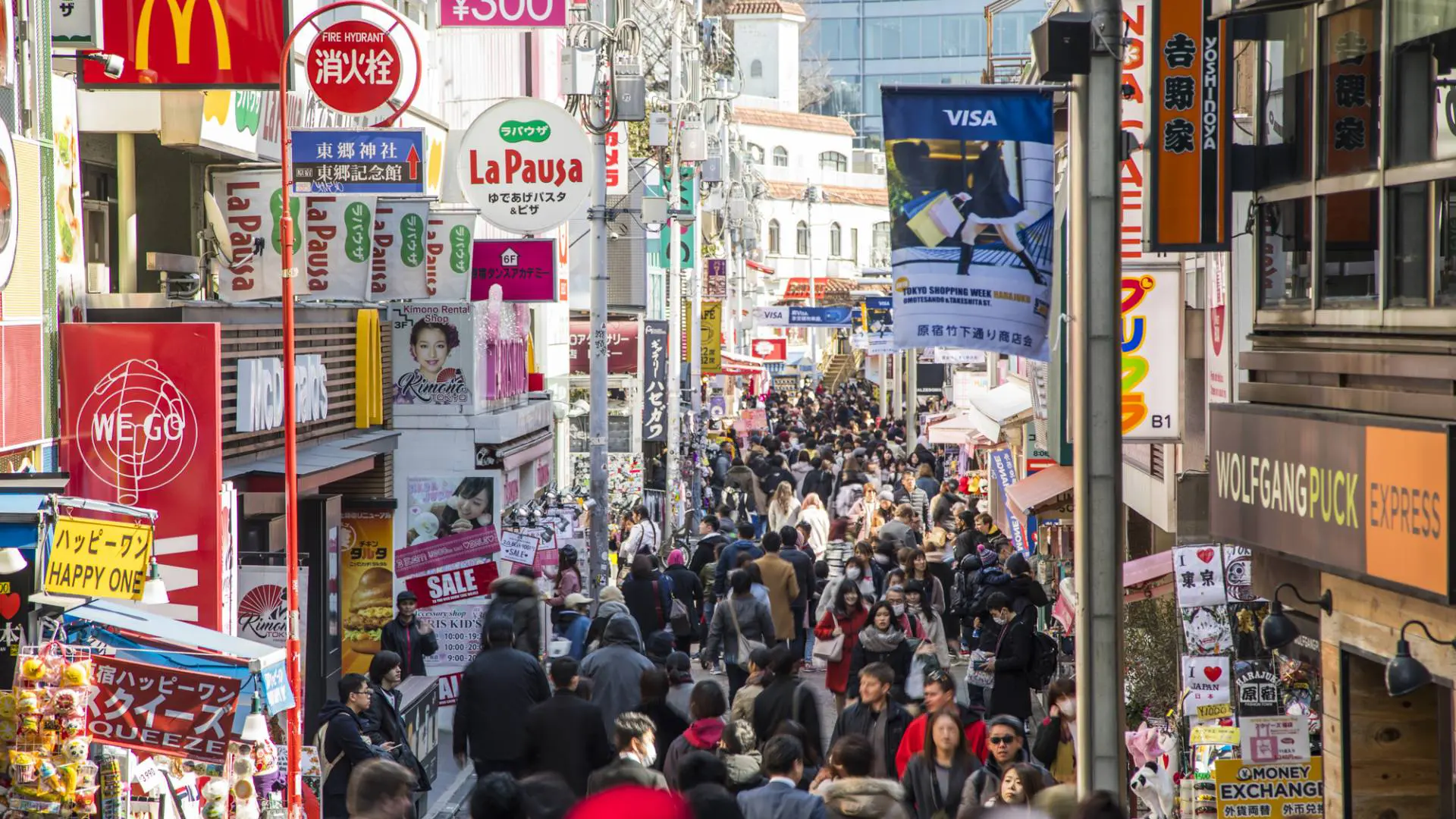
- Share this page
Share this page
- EN
Select Language
- FAVORITES
- Search
Detailed search: You can do a detailed search by keyword, genre, time, area and tag.
Main content starts here.
- Visit Tokyo |
- SPOT |
- Western Tokyo |
- All about visiting Harajuku: fashion, culture and more
Updated: October 19, 2022
All about visiting Harajuku: fashion, culture and more
About Harajuku
Harajuku (原宿 in Japanese) is a station located between Shibuya and Shinjuku on the JR Yamanote loop line around central Tokyo. Many people get off the train at Harajuku Station to visit such popular spots as Yoyogi Park, Meiji Shrine and Omotesando, a boulevard of luxury brands and other high-end shopping experiences.
Historically, Harajuku was a post town, which is reflected in the kanji characters that make up its name: “meadow lodging.” But today Harajuku has a completely different, and global, appeal as a birthplace of kawaii (cute) culture.
Harajuku is also home to Tokyo’s oldest wooden station building. In June 2020, the area surrounding Harajuku Station was updated with shops and restaurants to become a ‘A New Stage in Tokyo for Global Culture and Creation.’ This trend-setting Tokyo hotspot is well known for its cuisine, shopping and events.
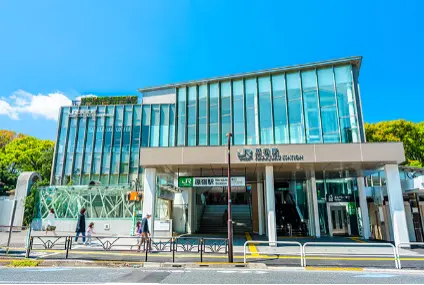
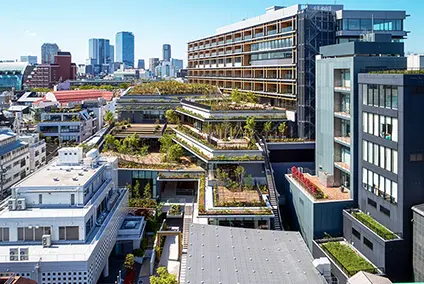
How to Get There
Harajuku Station on the JR Yamanote Line is the main access point, but you can also access the area from Meiji-jingumae Station on Tokyo Metro's Chiyoda and Fukutoshin lines. It takes around 10 minutes to walk from Harajuku Station to Aoyama or Omotesando and 20 minutes to the Shibuya area.
From Haneda Airport: 50 minutes by train to Harajuku Station.
From Narita Airport: One hour 40 minutes by train to Harajuku Station.
From Shinjuku Station: Four minutes on the JR Yamanote Line to Harajuku Station.
From Tokyo Station: 26 minutes on the JR Yamanote Line to Harajuku Station.
The epicenter of Japanese anime and ‘kawaii’ culture
Even if you have never been to Harajuku, the name may sound familiar thanks to Gwen Stefani’s pop hit “Harajuku Girls.” In Japan, the area is well-known to just about everyone—particularly fashion-conscious teenagers and young adults. In recent years, Japanese pop singer Kyary Pamyu Pamyu gained international fame for her Harajuku aesthetic and catchy music. Her song “Harajuku Iyahoi,” among many others, was naturally inspired by Harajuku.
Get to know the world-famous Harajuku street fashion
Harajuku styles range from the cute and casual to the extreme. On any given day here, you could run into elegant lolitas in dresses, heavily-pierced goths with long hair, or decora kei enthusiasts wearing colorful wigs. Since Harajuku is the land of free-spirited fashion, you may even run into cosplayers. Though Harajuku’s true heyday of wild fashion may be behind us, there will always be hardcore enthusiasts who carry on Harajuku’s fashion spirit. Why not try dressing up yourself? Whether it's tops, sweaters, or shirts, visitors can buy all manner of clothing as well as bags, backpacks and other accessories in a range of styles that you aren’t likely to find anywhere else. If you’re looking for a really unique Harajuku experience try a Harajuku makeup or nail salon. Beyond shopping for unique hair clips or changing your hairstyle you might even change your hair color.
Harajuku goth
The area centered on Takeshita Street is a treasure trove of niche fashion. The goth look has been around for many years and is still going strong.
Decked out in all black clothing, the goths of Harajuku form a strong contrast to the colorful ‘kawaii’ looks for which the area is famed. From the vintage-looking gothic lolita to the wild visual-kei goth style, there is a goth subculture for just about any group in Harajuku.
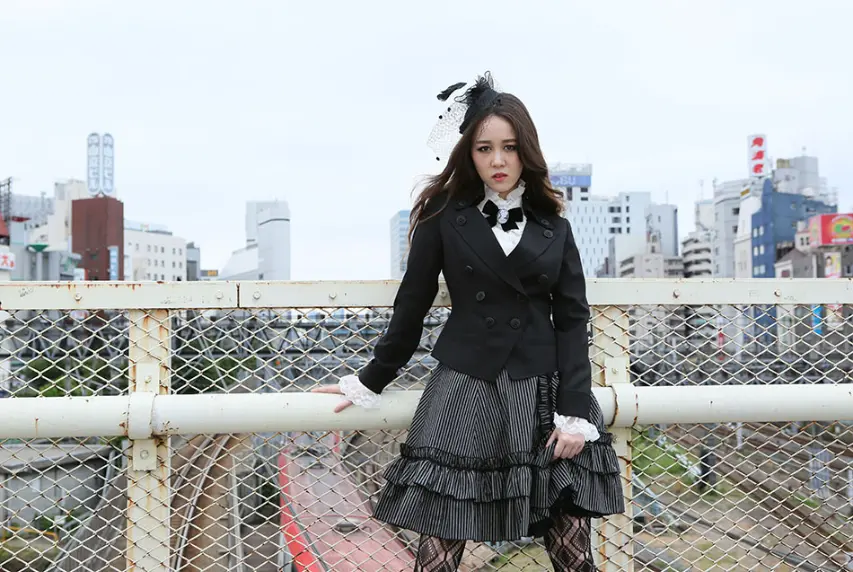
Decora kei
Decora kei fashion couldn’t be farther from the monotone goth style—it’s all about being wild, colorful, and over the top. Decora kei enthusiasts prefer to have as many vibrant and over-the-top accessories (especially hair clips) as possible. Keep an eye out for their rainbow-colored wigs and comfy clothing (like hoodies and sweatshirts) reminiscent of old-school cartoons. Decora kei may be less visible on the streets of Tokyo these days but its appeal is still strong around the world. Fairy-kei is a new category of the kawaii decora kei subset, featuring lots of soft, flouncy fabrics and pastel colors.
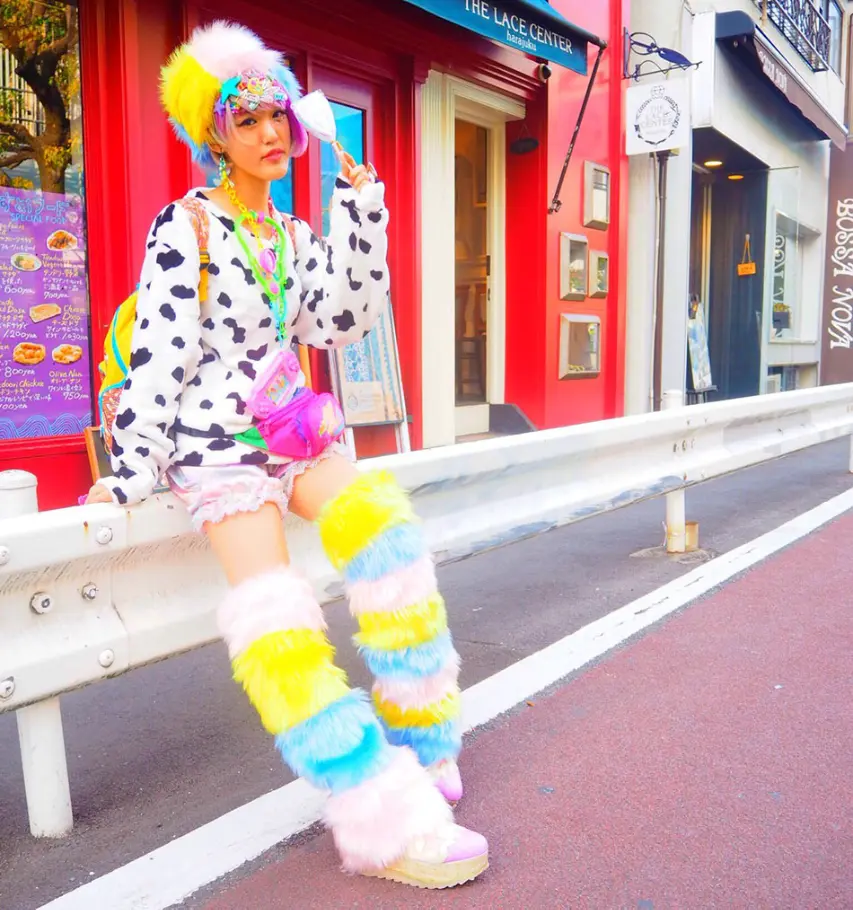
Harajuku Punk
Harajuku is an evolving ecosystem of global fashion looks, and punk has been a thriving part of that scene for decades. Punk is still represented now, as you will see when you stroll along Takeshita Street.
Ripped band tee shirts, plaid pants, studs, chains, and boots are hallmarks of the Harajuku punk scene. It is edgy and anti-conformist.
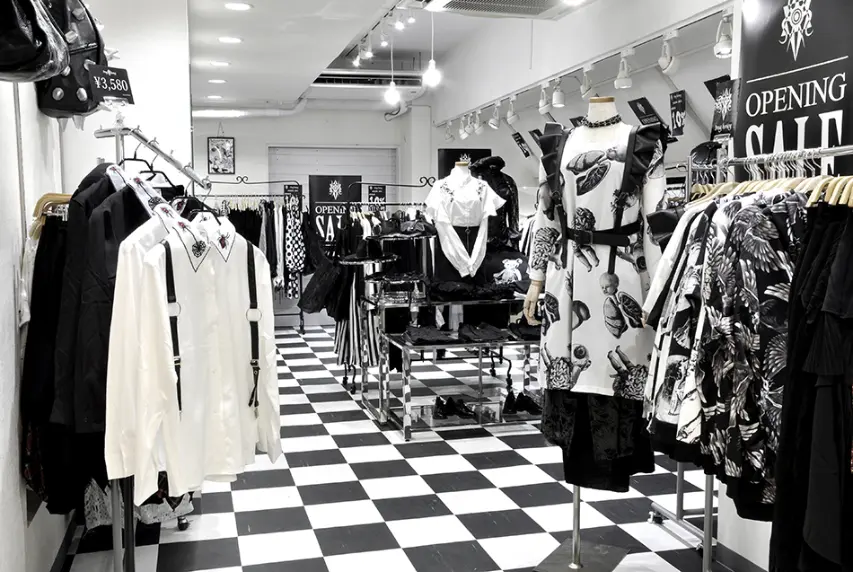
Courtesy of Drug honey
Harajuku cosplay culture
Harajuku has long been a place where people gather to express their unique fashion sensibilities in a safe and accepting environment. This area is one of the best places in the world to indulge your love of an anime character through cosplay—or simply your wish to try on a kimono. You won’t feel out of place in cosplay on Harajuku’s streets, where fashionable dressers wearing all sorts of unique and trending clothing styles are represented—ones that you can’t see anywhere else.
In Harajuku, you can see fashion trends emerging before your very eyes. It’s a paradise for both budding and veteran fashion-lovers.
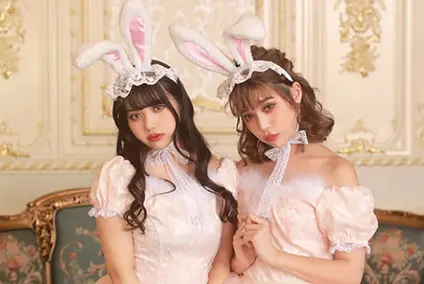
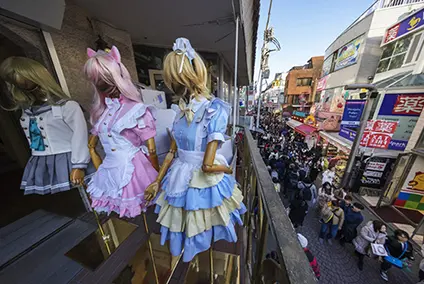
Shop ‘til you drop at the hundreds of stores lining Harajuku’s small streets
Takeshita Street
Harajuku’s iconic main street, Takeshita Street, is a must-see on a trip to Harajuku. Located just steps from Harajuku Station, this pedestrian paradise is generally packed most days of the year. Here, you can find some large-scale stores like the hundred-yen shop Daiso or drugstores selling makeup, but for the most part, the street is lined with small, quirky shops hawking inexpensive clothes and accessories. Though it may be a bit of a sensory overload, it is a can’t-miss destination that is synonymous with Harajuku itself. As with most anywhere in Harajuku: if the main street is too crowded for your liking, duck down a side street, which is likely to be far quieter and have just as many unique and interesting shops.
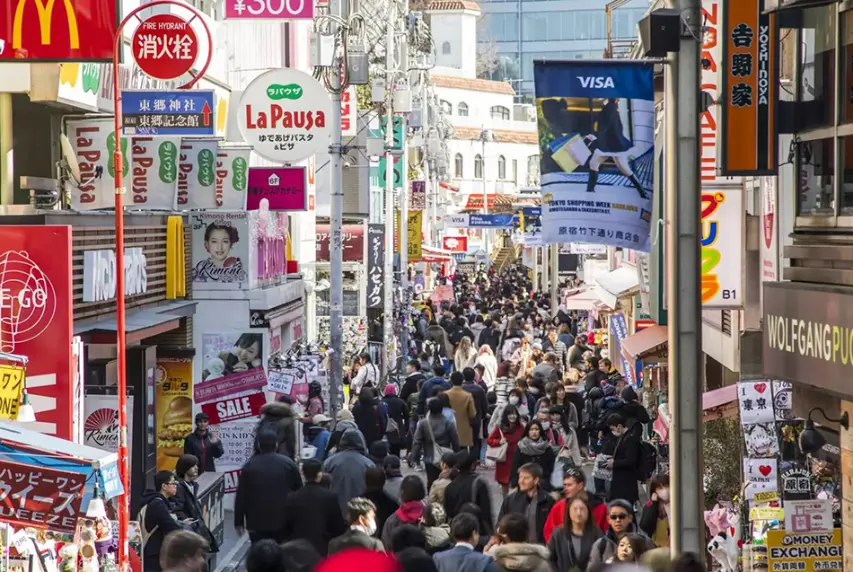
Cat Street
Cat Street is the more grown-up version of Takeshita Street, attracting a slightly older crowd. Located between Shibuya and Harajuku, Cat Street is home to a variety of shops ranging from small upscale boutiques to big international brand stores. On Cat Street, you can find anything from a one-of-a-kind vintage sweater to a pair of high-end designer shoes—but unfortunately, there are no cats to be seen here.
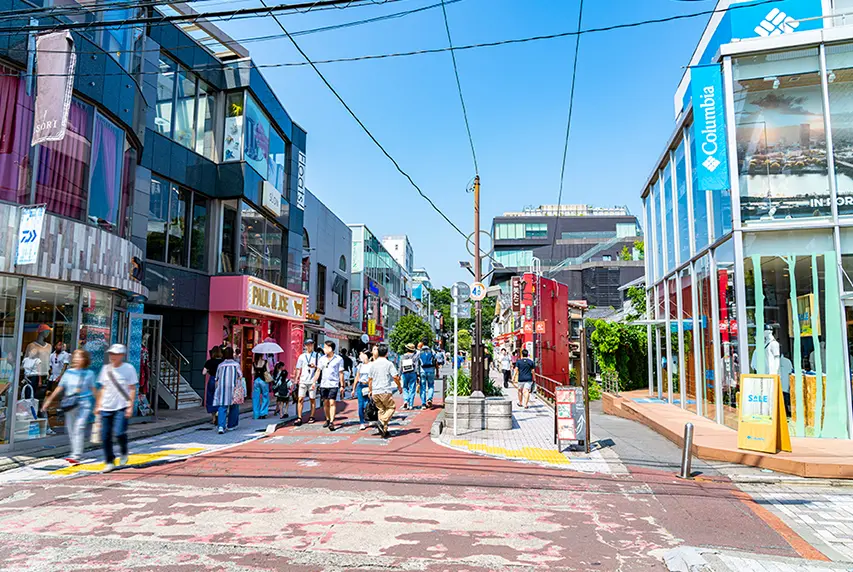
Laforet Harajuku, Kiddy Land, and more in Omotesando
Laforet Harajuku is a funky, maze-like shopping center located across the street from the mirror-like Tokyu Plaza Omotesando Harajuku. Inside, you can find shops by local Tokyo brands right next to well-known international boutiques. Give yourself a Harajuku makeover by decking yourself out from top to bottom. Men and women can find items like hoodies, jackets, shirts, and pants here. The fun is all in finding your new favorite stores. Check out the second floor for a variety of dining options.
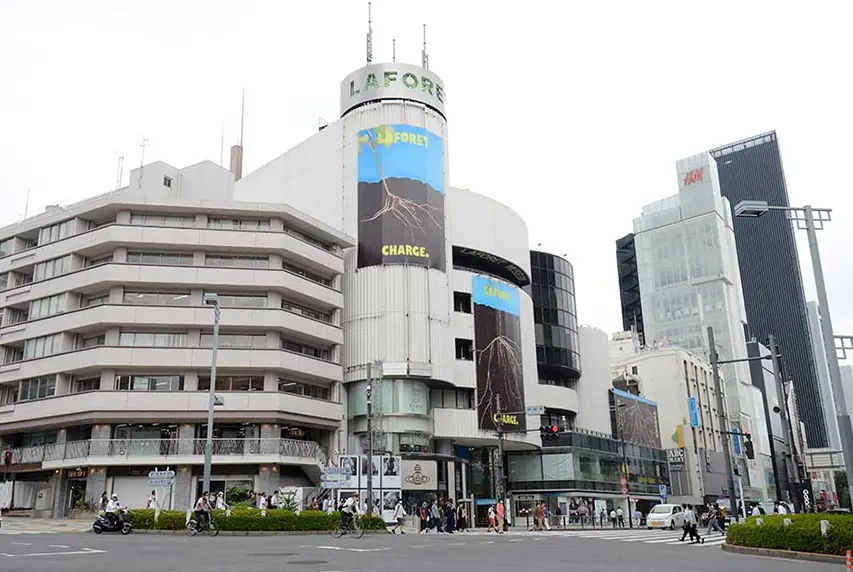
Kiddy Land is your one-stop shop for merchandise for all sorts of characters. At Kiddy Land, you can find merchandise from both Japanese and foreign franchises. Star Wars sweatshirt? Check. Hello Kitty hair clips? Check. Pokemon backpack? Check. If you can dream it up, it is likely sold here. You can easily find souvenirs here for all of your friends back home, or even do some shopping for yourself at Kiddy Land. One of the shop’s top items is stuffed toys of the popular character Rilakkuma.
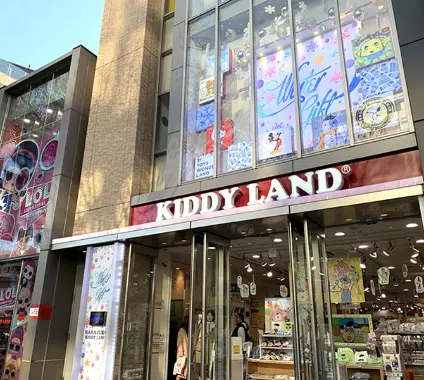
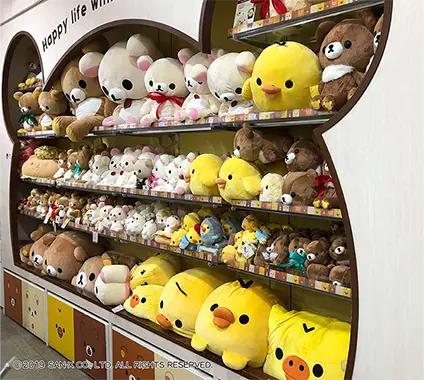
Harajuku isn’t all kawaii—there’s no shortage of big-name global brands. NIKE set up its first Tokyo flagship store here in 2009. Other international style icons in Harajuku include Vivienne Westwood and Dior. Even if subculture fashion and kawaii culture isn't for you, the area is worth a visit for high-end shopping.
Make your friends jealous with Instagram-worthy Harajuku food
If you think all of this shopping might make you hungry, you’re in luck, as Harajuku has plenty of street food and other dining options for hungry shoppers. Traditionally, most Japanese people associate a trip to Harajuku with a sweet or savory crepe—chocolate banana is a long-time favorite. Another favorite is hattogu, a distant Korean relative of the American corndog, packed with lots of stretchy mozzarella. If you’re after Instagram likes, try some of Harajuku’s rainbow foods, ranging from massive cloud-like tufts of rainbow cotton candy to gooey rainbow grilled cheese. No matter which option you end up choosing, Harajuku’s stylish street food is not only great to eat, but also great to share on social media. In addition to street-food, Harajuku has a wide variety of restaurants, including organic restaurants.
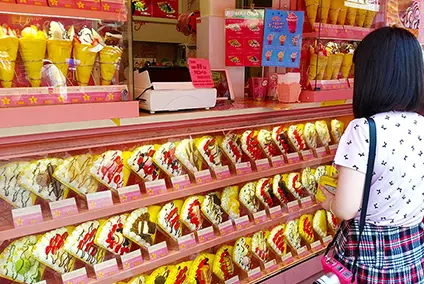
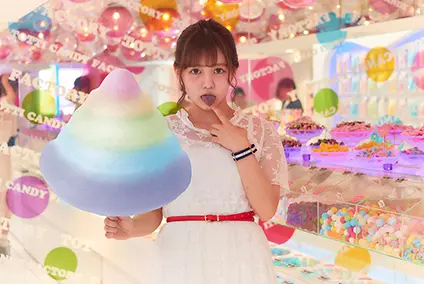
Take a break from shopping at the urban oasis Yoyogi Park
Got too many shopping bags to carry, or have you simply bought too many cute and fashionable bags? You deserve a well-earned break, so put your bags in a coin locker and head to Yoyogi Park or Meiji Shrine.
At Yoyogi Park, you can generally find anyone from office workers to families with children and dogs relaxing in the wide-open green space. Bring a picnic blanket, or use one of the many park benches, and relax and gaze at the clouds, or engage in some excellent people-watching.
Meiji Shrine, with its impressive torii gate, is another great place to escape the noisy crowds. Once inside the peaceful and quiet shrine grounds, it seems like bustling Harajuku could be miles away.
After you’ve recharged your batteries, will you head back to Harajuku for more shopping? Or move onto your next destination in Tokyo? The choice is up to you.
